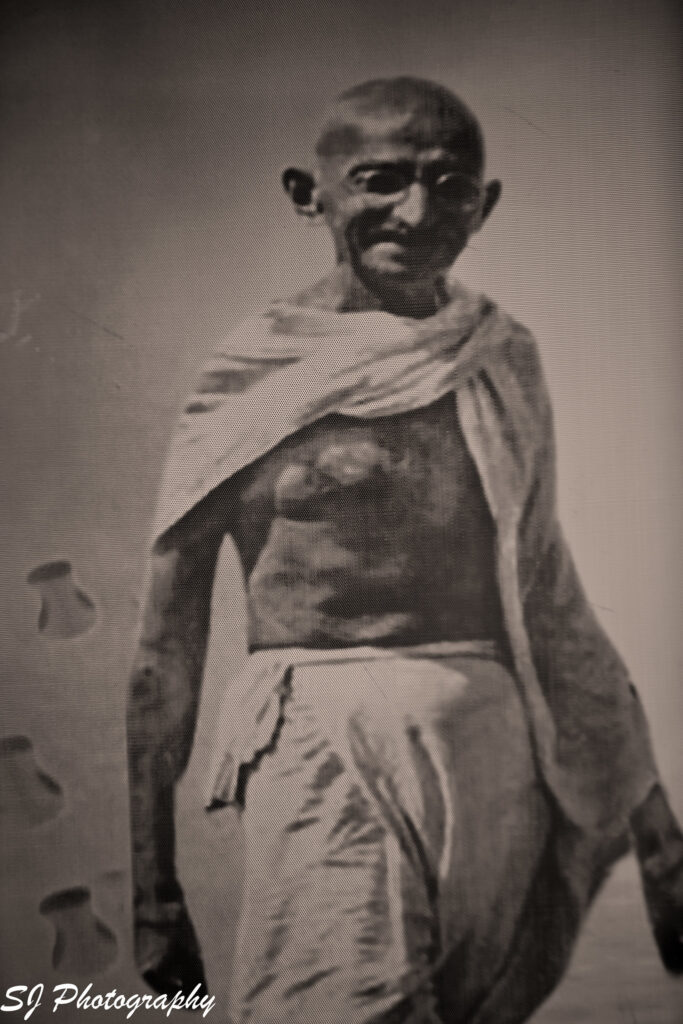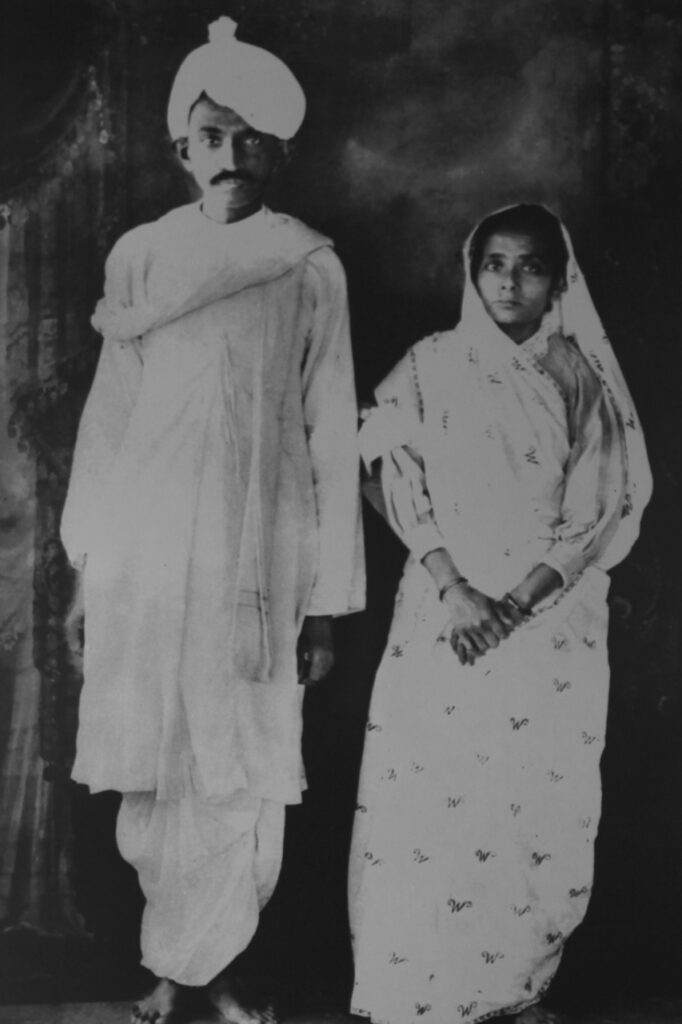Putlibai wreathed under the oppressive winds in the seaside town of Porbandar. It was 2nd October 1869 and nothing could ameliorate the pain of childbirth that she was going through. For thousands of others, it was just another day on the calendar that would soon pass. It has been 152 years since, and the enduring importance of this day remains.
Celebrated for his charismatic leadership and his innovative tool of nonviolent resistance, Gandhi remains for many, a timeless icon. However, such idealisations can easily lead us astray from realizing the true nature of Gandhi and the relevance of his tool of non-violence in a world characterised by varied religious and political differences.
Indeed Gandhi was a complex fellow, and so was his proposition of Satyagraha, which as a strategy, hinged every minute on something as evasive and relative as truth.

The term Sat literally means “it is”. We can advance upon the meaning of what is, only by enquiring further about what, where, and when? What might have been or what should be are different for people and so is truth. So can Gandhi’s idea of satyagraha be applicable universally? If not, what is the alternative?
Only a nuanced behavioural analysis of Gandhi will help us in understanding the scope of his program and in realising the true challenges of peacemaking in a violent world.
For Gandhi, satyagraha was as much a political tool as a spiritual one, that entailed the mastery of a form of self-purification. The twin commitments of vegetarianism and sexual abstinence, he believed, were the defining characteristics of an efficacious moral and political leadership.
Vegetarianism for Gandhi was a commitment that he made to his mother and also the order of the religion he followed. Thus, vegetarianism was morally easy, but sex was not.
Married at the raw age of 13 to Kasturba, Mohandas Gandhi encountered ominous signs from the beginning. His father’s coach overturned on a jagged road on a trip to make wedding preparations. His condition would worsen with time and he would succumb to his injuries 3 years later. During this time young Mohandas would pay scant attention to his ailing father and devote himself completely to his wife. Just like any other pubescent child, Gandhi would become furiously jealous and protective of his wife. For the major part of his early marriage, Gandhi was occupied with satisfying his “carnal lust,” which effectively prevented him from caring for his dying father. On the day his father died Gandhi had left him to go wake up Kasturba and have sex with her. She was expecting at the time and later miscarried. Gandhi never realised that a sexual relationship could be characterized by mutuality.

Thus, sex and death became inextricably intertwined in his mind. Gandhi eventually blamed his father for the trauma he experienced. His father should have had the sense to not inflict on young Mohandas the cruel custom of child marriage. Kaba Gandhi himself was inflicted with issues of “carnal pleasures,” Gandhi says in his autobiography. Kaba Gandhi married thrice before he finally married Gandhi’s mother. As Erik Erikson puts it, “The oversexed father, as Gandhi imagined him in his unconscious, cast an intergenerational curse on him. A man must give an account of his conflicts with his father to make sexuality amenable to mastery”.
Gandhi found it extremely tough to attain that mastery. Only after he had four children was he able to commit to the vow of abstinence, or brahmacharya and feel spiritually ready to embark on his political campaigns.
Furthermore, Gandhi’s Muslim adolescent friend Mehtab sorely tested his vows of fidelity and vegetarianism. Mehtab repeatedly urged Gandhi to consume meat, for it was the only way to become equally strong as the British. Giving into Mehtab’s whims Gandhi consumed goat meat but was unable to stomach it. In his autobiography, Gandhi’s records show he had a nightmare of a live goat bleating inside him. Mehtab also insisted they visit prostitutes. Initially reticent, Gandhi eventually agreed. Nonetheless, these visits were not successful because of what Gandhi believed to be his”good fortune” i.e. inability to perform sexually when with the prostitutes. Derided by both his mother and wife, Gandhi was still stuck by his friend Mehtab. For Erikson, this was Gandhi’s attempt to embody his negative identity. “By choosing Mehtab as a friend, he unconsciously tested himself to prove to himself that he could sin—and test the limits of that experience, too”. However, there are instances where Gandhi goes awry with his experiments.
When Gandhi was assembling a motley bunch of individuals to carry his non-violent campaign in Durban, he expected his wife to cheerfully adapt to all the changes. For most of the time, Kasturba genuinely accepted her responsibility without any questions. But once when she grimaced and refused to clean the chamber pot of a Christian: an untouchable, Gandhi rebuked her and showed her the door to their house. There, Kasturba burst into righteous tears and anger. It seems that it never occurred to Gandhi to ask his wife for her opinions regarding turning their house into a political commune. Furthermore, drawing from his early experiences of educating Kasturba, Gandhi describes himself as a “cruelly kind husband” who “harassed her out of my blind love for her.”

There is something amiss in this notion of cruel kindness that calls for harassment. Even the purest of the souls have some ambivalence.” The future of satyagraha” then, “is at stake” Erikson argues. A demanding moralism won’t work. We cannot pretend to deny “our inner ambiguities, and allow only an additional leverage of truth based on self-knowledge to give us freedom in the full light of conscious day.” The alternate “moralistic terrorism” drives our worst inclinations and feelings underground, “to remain there until riotous conditions of uncertainty or chaos” reinforce their emergence with increased and often deadly energy.
Then one must agree that self-purification itself has a darker side to it. Extreme experiments with food, sex, and self-laceration may risk pushing ethical limits, transforming this practice into something akin to a cult. One example of this is the Japanese cult of Aum Shinrikyo (the mid-1980s-1995). Led by the”guru” Shoko Asahara, the cult of Aum represented an eclectic mix of ideas from Buddhism, Hinduism, and the Christian Book of Revelation. Amassing a war chest of half a billion dollars, Asahara had ten thousand followers in Japan and another twenty thousand in Russia. A fanatic commitment to Asahara’s ‘apocalyptic project’ resulted in the murder of nearly seventy outsiders (lawyers, prosecutors, and anyone trying to raise concern) by the elite members of the cult. They were self-proclaimed searchers of truth and they endured tortuous testings for the fulfilment of this order. From blistering showers, immersions in ice-cold water to living in vermin-infested unclean virtual cages, the members of this cult did all of it to test their spiritual growth while Asahara himself travelled to fancy restaurants in the evening and gorged himself.
So self-purification as an elemental component of satyagraha is a complicated business. While political actions may require self-experiments with truth, these cannot happen at the cost of exploiting others. Any restraint, must be ethically embraced and not be a tyrannical imposition by the leader. To this extent, non-violence may not be a feasible solution to all intractable conflicts as we have seen in the case of Nazis or the Soviets under Stalin. However, the Gandhian practice of nonviolent resistance transcends beyond the elimination of an evil salt tax. Its essence lay in transforming the opposition ethically, by unflinchingly accepting the violence of the unmitigated forces of evil that the satyagrahi is trying to change. It takes massive self-preparation for any such confrontation and is indeed a perilous task. The two most important satyagrahis in the twentieth century, Gandhi and Martin Luther King Jr. were assassinated. Nonetheless, the ever-increasing tide of global authoritarianism, and the threats to existence due to nuclear weapons and global warming, raises concerns that cannot be overlooked. Gandhi’s imperfect ways might be the only saving grace for our failing selves.


It’s an remаrkable article designed for all the web viewers;
they will take advantage from іt I am suге.